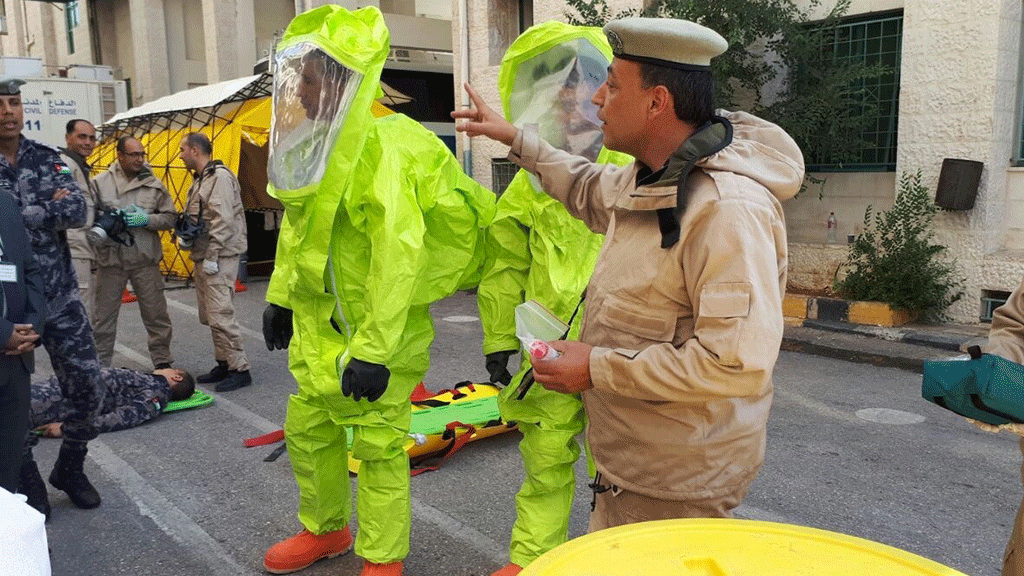Public Health Emergency Operations Centers: Creating More Resilient Communities

CRDF Global has partnered with No More Epidemics to encourage governments to do more to support efforts to combat infectious disease. As part of this campaign, John Crockett shares some recources for those interested in public health emergency operation centers as a front-line response to emerging infectious diseases. This blog post originally appeared on No More Epidemics.
The July 2014 arrival of Ebola virus in Nigeria could have been yet another tragic chapter in the spread of a deadly wave of disease that swept across West Africa. Many in the global health world credit Nigeria’s ability to quickly set up a public health emergency operation center (PHEOC) as key to preventing the emergence of Ebola virus across the country. The Nigeria public health emergency operation center effectively mobilized the expertise, infrastructure, and partner organizations from its polio eradication campaign to prevent the emergence of Ebola. Below I offer some resources for those interested in public health emergency operation centers as a front-line response to emerging infectious diseases.
GHSA Framework: The Respond Action Package
The Emergency Operations Action Package provides Ministries of Health and other stakeholders with a set of performance metrics that can guide successful development of PHEOCs. If fully implemented, GHSA envisions countries having a well-functioning, multi-sector response capacity (PHEOC) activated within 120 minutes of the declaration of a public health emergency. If this ambitious goal can be reached, it would have a dramatic impact on the emergence of infectious diseases and greatly mitigate their harmful impacts. A major challenge continues to be garnering support and participation by multiple—sometimes competing—and, often, resource-limited agencies, to coordinate effective responses. In my opinion the early results from the field and WHO-lead assessments of all hazards response, indicate that much leadership and substantial investment will be needed to reach this important milestone.
Finding a Baseline: The Role of JEE Assessments
Another important resource for the global health community is the WHO’s Joint External Evaluations (JEE). The Joint External Evaluation Tool (JEE Tool) International Health Regulations (2005) is a data gathering instrument designed to evaluate a country’s capacities for health security, including all International Health Regulations and GHSA capacities across all relevant sectors at the national level. Five JEE evaluations have been published on the GHSA website. A review of these—and the many to come—can provide the global health security community with a useful baseline, not just for public health emergency operation centers, but all GHSA action items. The published assessments for Bangladesh, Ethiopia, Liberia, Mozambique, and Tanzania show many gaps remaining in the development of the public health emergency operation centers framework, especially for multi-hazard emergency preparedness and response plans.
Evidence Base
In 2012, well before the emergence of Ebola virus and the initiation of GHSA, the WHO established the Public Health Emergency Operations Centre Network (EOC-NET). EOC-NET continues to serve as “an evidence based guidance for building, operating, and improving public health emergency operation centers”. EOC-NET is the ultimate primer for organizations, donors, and Ministries of Health that want to incorporate best practice into the development or their EOC. In addition to a wealth of information about public health emergency operation centers on the EOC-Net website, you will also find the 2015 WHO publication, “Framework for a Public Health Emergency Operations Centre,” which provides the best single source for public health emergency operation centers development and operation.
Another outstanding resource is the May 2016 article, “Emergency Operations Centers, Transitioning to a More Resilient Model.” This resource is published by Dalberg Global Development Advisers in collaboration with The Bill & Melinda Gates Foundation and World Humanitarian Summit. The Dalberg report provides a detailed description of the context of, and various models for, public health emergency operation centers.
The challenge of preventing, detecting, and responding to emerging infectious disease is indeed a grand one. While no single activity can address this challenge, public health emergency operation centers are an important tool in the effort to ensure global health security.



